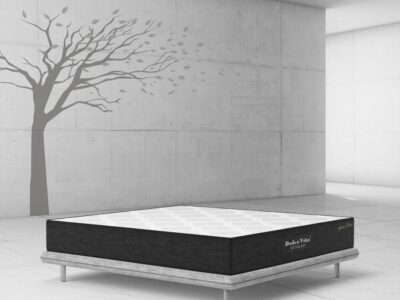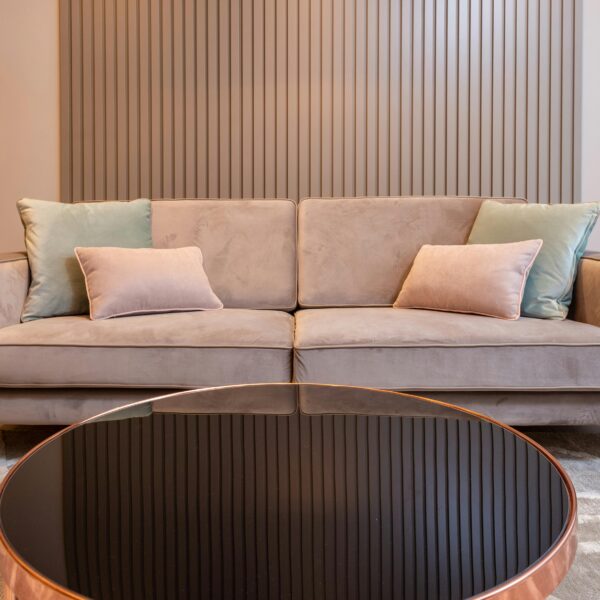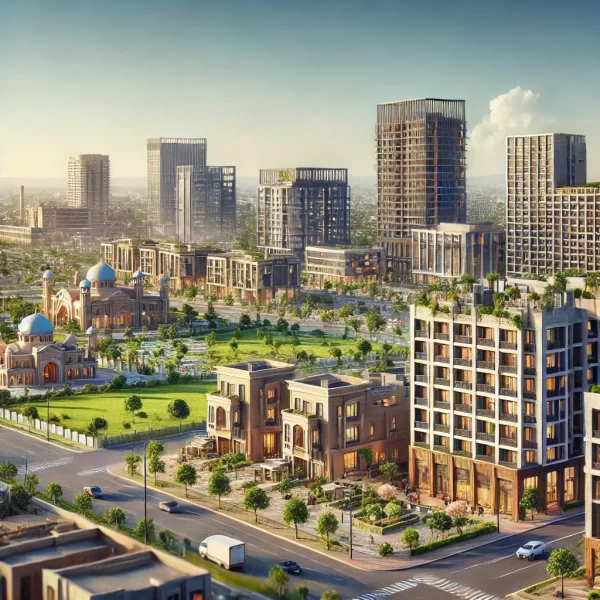
In the ever-evolving world of interior design, contemporary aesthetics stand at the forefront, offering a dynamic and innovative approach to crafting living spaces. The essence of contemporary interior design lies in making bold statements that reflect the spirit of the times while maintaining a harmonious balance between style and functionality. This exploration into the realm of contemporary interior design delves into key principles, trends, and strategies for creating spaces that captivate the imagination and leave a lasting impression.
Defining Contemporary Interior Design:
Contemporary interior designing is a fluid and ever-changing style that reflects the current trends and design philosophies of the present moment. It is not tied to a specific time period, unlike modern design, and embraces a wide range of influences, materials, and forms. At its core, contemporary design is about breaking conventions, embracing innovation, and creating spaces that resonate with the lifestyle and preferences of today’s inhabitants.
Embracing Minimalism: Less is More:
One of the defining characteristics of contemporary interior design is the emphasis on minimalism. The mantra “less is more” prevails, with clean lines, uncluttered spaces, and a focus on essential elements. Minimalist interiors create a sense of openness and tranquility, allowing key design elements to shine without unnecessary embellishments.
In contemporary living rooms, for example, you might find sleek, low-profile furniture with simple yet striking geometric shapes. Neutral color palettes, such as whites, grays, and muted tones, contribute to a sense of serenity, allowing carefully selected furniture and artwork to become focal points.
Playing with Contrasts: Balancing Elements in Contemporary Spaces:
Contemporary design often thrives on the artful juxtaposition of contrasting elements. This could involve the interplay of light and shadow, smooth and textured surfaces, or the harmonious marriage of different materials. The key is to create visual interest and depth while maintaining an overall sense of cohesion.
In a contemporary kitchen, you might see the juxtaposition of glossy, reflective surfaces with matte textures. For instance, high-gloss cabinets against a textured backsplash or a sleek quartz countertop paired with matte-finished appliances. These contrasts not only add visual intrigue but also contribute to a dynamic and modern aesthetic.
Open Concept Living: Creating Seamless Transitions:
Contemporary interior design often embraces the concept of open living spaces, breaking down traditional barriers between rooms to create fluid transitions. This design choice enhances the sense of spaciousness, fosters connectivity, and allows for natural light to permeate throughout the home.
In an open-concept contemporary home, the living room seamlessly flows into the dining area and kitchen. The absence of walls and partitions fosters a sense of inclusivity, making the space conducive to socializing and shared experiences. Strategic furniture placement and the use of multifunctional pieces contribute to the flexibility of these open layouts. Read more: https://emperiortech.com/
Technology Integration: Smart and Connected Spaces:
The contemporary era is characterized by rapid technological advancements, and interior design is not exempt from this influence. Smart home technology is seamlessly integrated into contemporary interiors to enhance convenience, efficiency, and the overall living experience.
Smart lighting systems, automated climate control, and integrated audiovisual systems are common features in contemporary homes. Designers carefully incorporate these technologies, ensuring that they complement the overall aesthetic rather than disrupt it. Concealed wiring, sleek control panels, and minimalist interfaces contribute to a seamless and sophisticated technological integration.
Sustainable Design: Eco-Conscious Living in Contemporary Style:
As environmental consciousness grows, contemporary interior design increasingly emphasizes sustainability. Designers and homeowners alike are leaning towards eco-friendly materials, energy-efficient appliances, and practices that reduce the environmental impact of interior spaces.
In contemporary bedrooms, for instance, sustainable materials like reclaimed wood or bamboo might be used for furniture. Energy-efficient lighting fixtures and smart thermostats contribute to a greener and more responsible approach to interior design. The integration of indoor plants not only enhances aesthetics but also promotes air quality and a connection to nature.
Bold Colors and Statement Art: Infusing Personality into Spaces:
While neutral palettes are common in contemporary design, there is also a willingness to experiment with bold colors as accents. A single vibrant hue against a backdrop of muted tones can create a striking visual impact. This could be manifested in accent walls, furniture pieces, or even in the choice of statement artwork.
Contemporary interiors often feature large, bold art pieces that serve as focal points. These artworks, whether paintings, sculptures, or installations, contribute to the overall narrative of the space. They add a personal touch and inject a sense of individuality into the design, making a strong statement about the homeowner’s tastes and preferences.
Innovative Materials and Textures: Pushing the Boundaries:
Contemporary interior designers are continually exploring innovative materials and textures to push the boundaries of design. From cutting-edge composites to sustainable materials, the emphasis is on creating tactile experiences that engage the senses.
In contemporary bathrooms, for example, you might find unique tile materials like concrete-look porcelain or textured ceramic tiles. The play of light on these surfaces adds depth and visual interest. Similarly, the use of materials like glass, steel, and concrete in furniture and decor contributes to the creation of a visually dynamic and modern space.
Flexibility and Multifunctionality: Adapting to Modern Lifestyles:
Contemporary living is characterized by flexibility and adaptability, and interior design reflects this by incorporating multifunctional furniture and flexible layouts. Furniture pieces that serve dual purposes, such as storage ottomans or sofa beds, are integral to creating versatile spaces.
In contemporary home offices, flexible workstations that can be easily reconfigured to accommodate different tasks and collaboration are becoming more prevalent. The ability to transform spaces based on changing needs aligns with the dynamic nature of modern lifestyles.
Statement Lighting: Sculptural Fixtures and Ambient Design:
Contemporary interior design places a strong emphasis on statement lighting as an integral part of the overall aesthetic. Sculptural light fixtures serve as functional art pieces, adding an element of drama and sophistication to spaces.
In dining areas, for instance, a contemporary chandelier with a unique design can become a visual focal point, casting ambient light and defining the character of the space. Floor and table lamps with sculptural bases also contribute to the overall design scheme while providing task lighting where needed.










